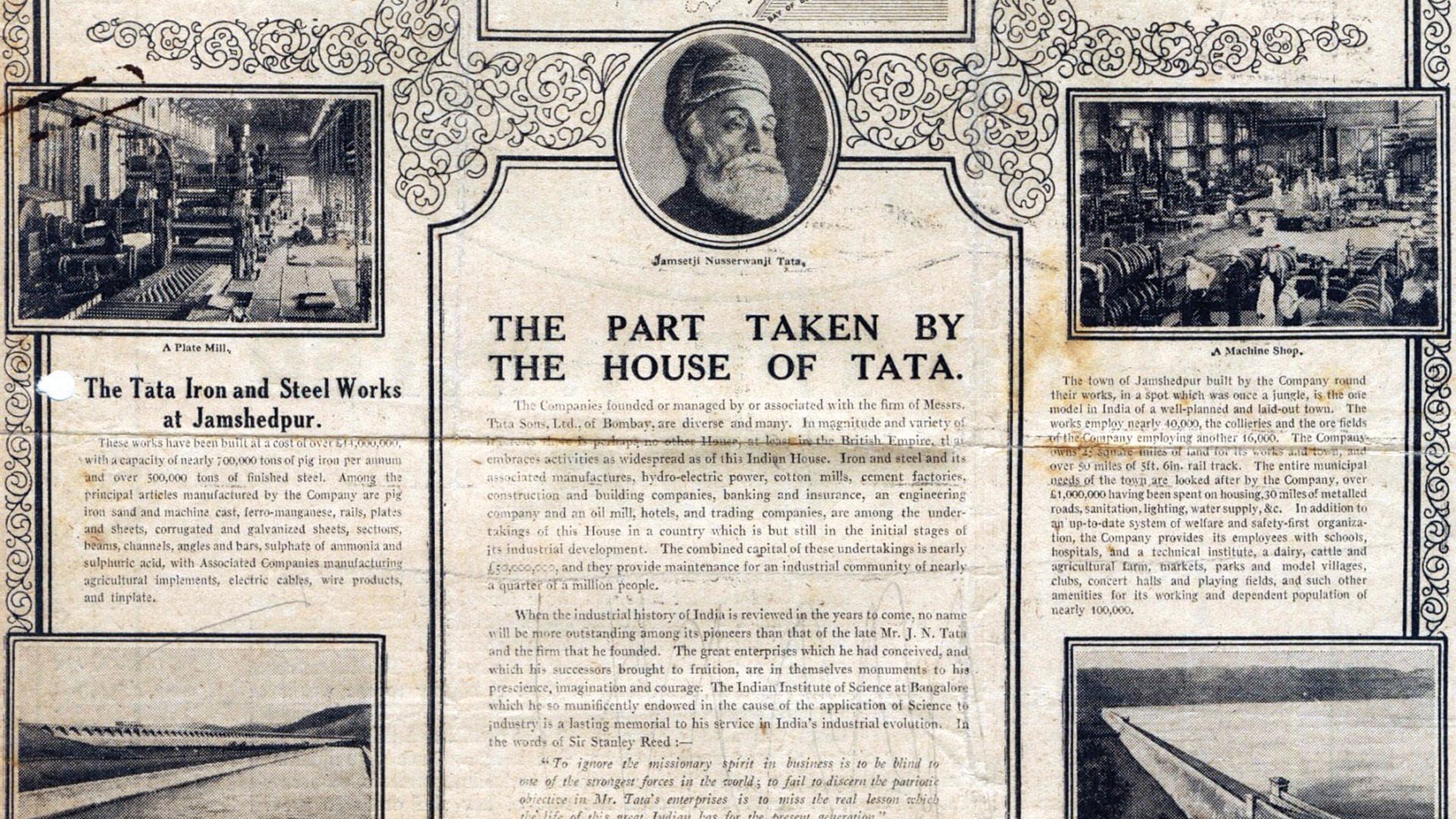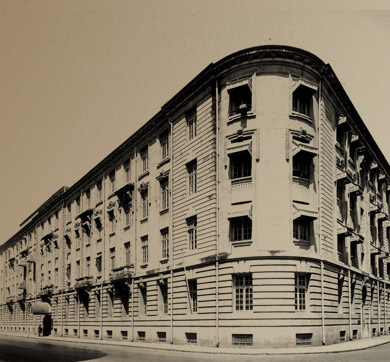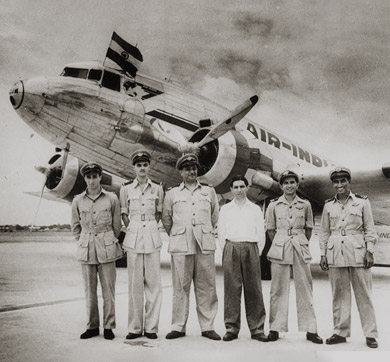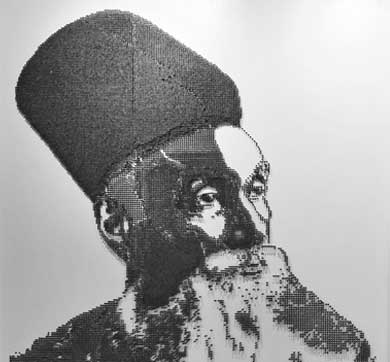April 2023 | 698 words | 3-minute read
On the occasion of India's 75th anniversary of independence last year, we tracked the advertisements of Tata group companies from pre-independence years up to present times. The leitmotif of the messaging permeating across group companies through the decades, is to make India economically independent and self-reliant in every sphere of activity.
Here are a few that stand out:
With India still two decades away from becoming a sovereign nation, this advertisement (below), published in the Times British Empire Products, circa 1930, lists some of the earliest projects undertaken by the Tata group.
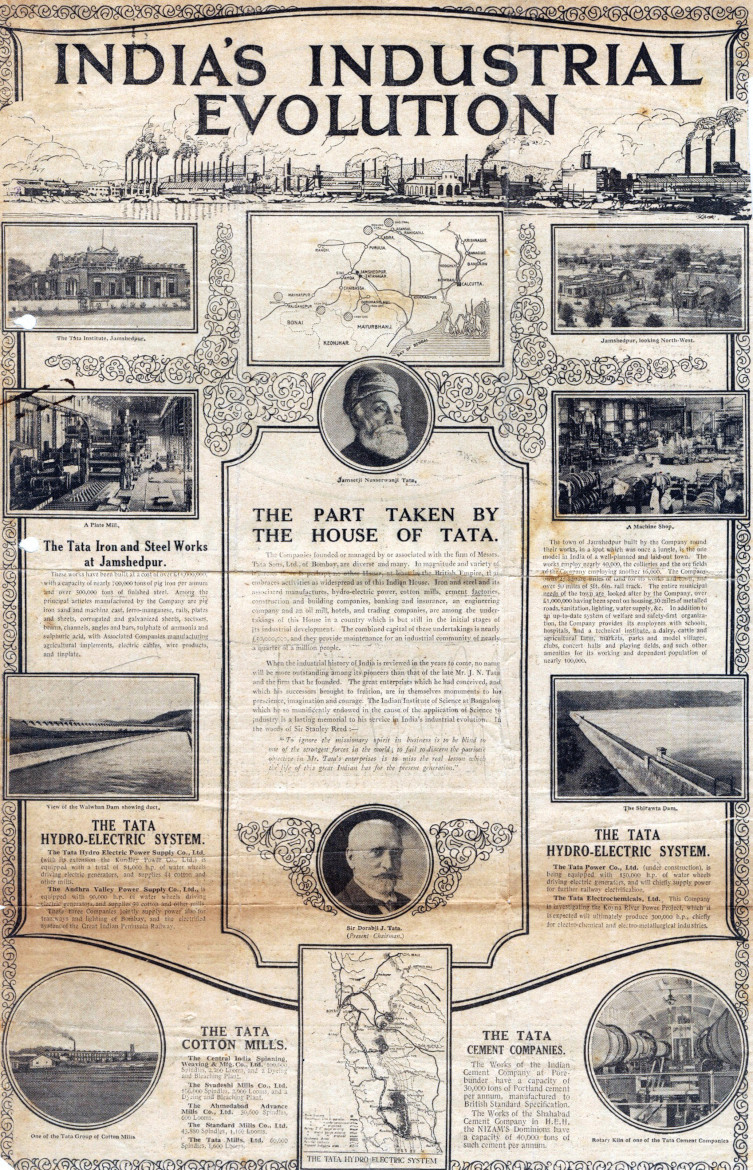
From textile mills and steel works to hydroelectric systems and cement factories, the company's multipronged approach to the country's socio-economic development was already yielding results.
In the post-war era, Tata Steel continued to be a steady anchor and a harbinger of the country's industrial revolution.
Ads from the 1940s, leading up to India's sampoorna swaraj, depict the pivotal role the company played in providing essential machinery and farm equipment to industries, as well as in developing the transport infrastructure with steel made in India by Tata Steel.

This ad (above) for the popular 501 detergent soap — by Tata Oil Mills Company (TOMCO), which started in 1917 and manufactured a range of soaps, including the iconic Hamam bathing bar — urges consumers to supplant imported soaps with those made on home soil, thus reiterating the idea of using swadeshi or made-in-India products.
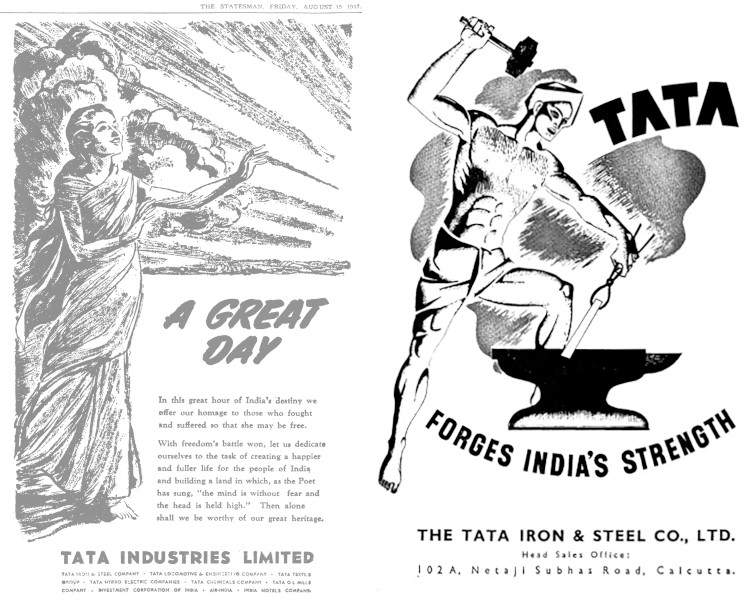
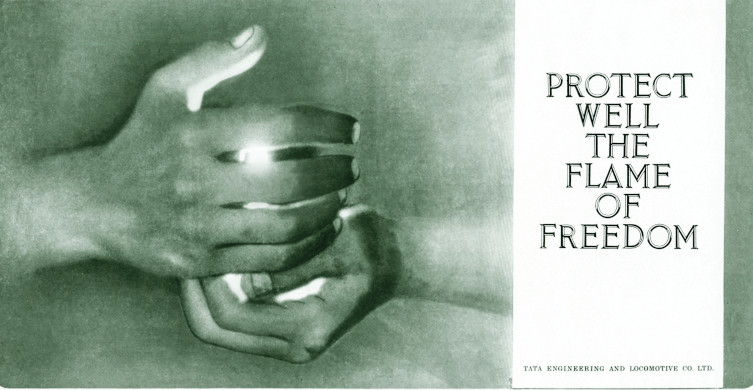
For an industrial house that had been working to make India economically self-sufficient on all fronts since its founding in 1868, India's independence was an occasion to reaffirm its commitment to continue doing good work for the progress of the nation.
Reinforcing this allegiance, the group would continue to soar on the newfound wings of freedom, pioneering several industries in the country and contributing to India's sustainable socio-economic growth.
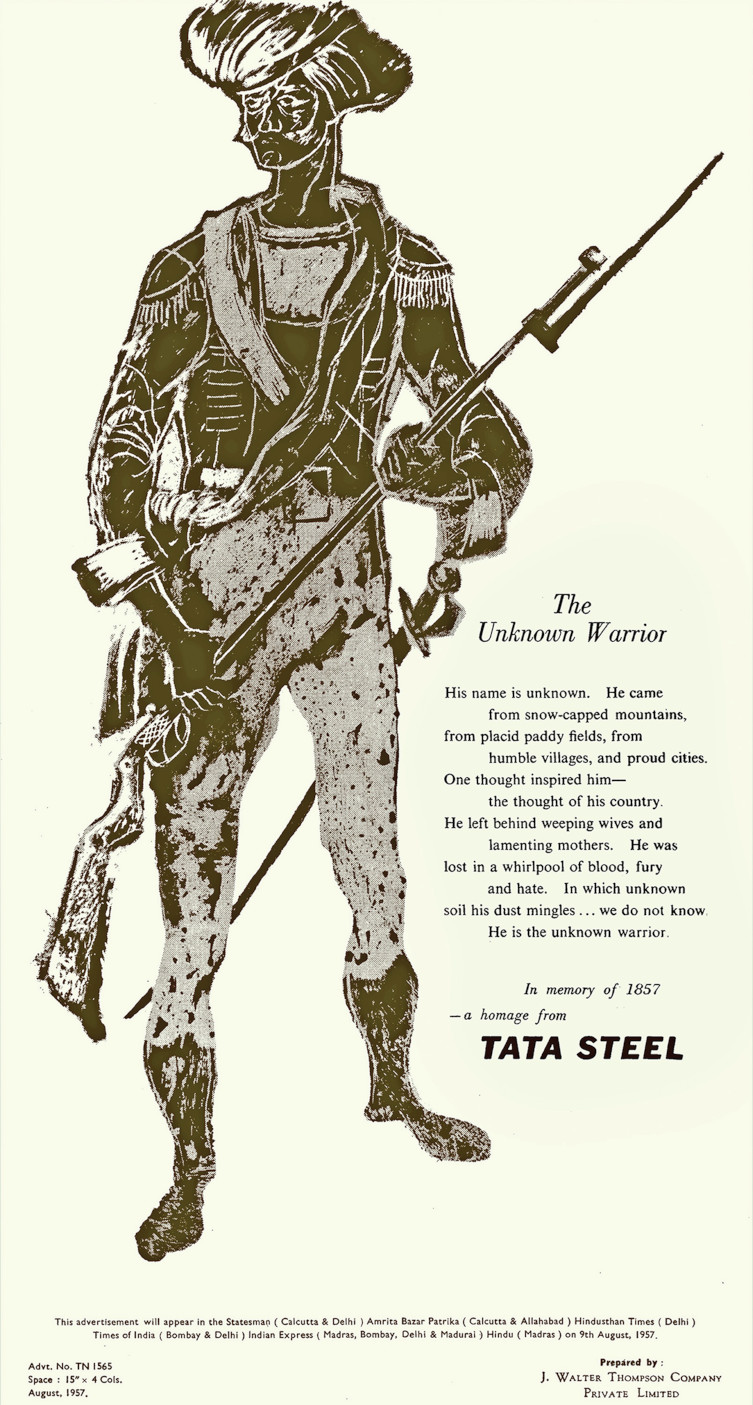
Much before the Swadeshi Movement started in 1905, our Founder Jamsetji Tata felt so strongly about the ideology that in 1886 he named one of his four textile mills as Svadeshi Mills.
To this day, the need to put the nation first has been the core messaging across Tata companies. Tata Steel's August 1957 print ad (above), which appeared in leading news publications of the time, chose to focus on the 'unknown warrior' as a mark of tribute to the First War of Independence in 1857.
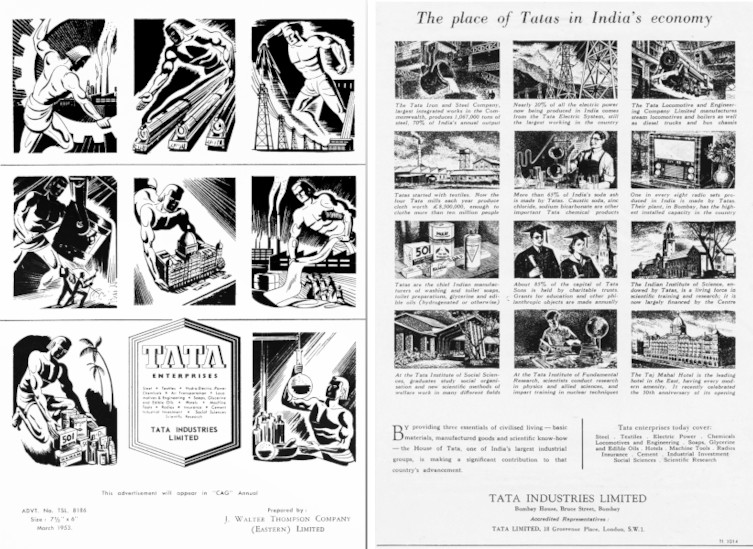
These ads (above) published in the 1950s highlight the extent and array of projects undertaken by the Tata group and their direct impact on young independent India's burgeoning economy.
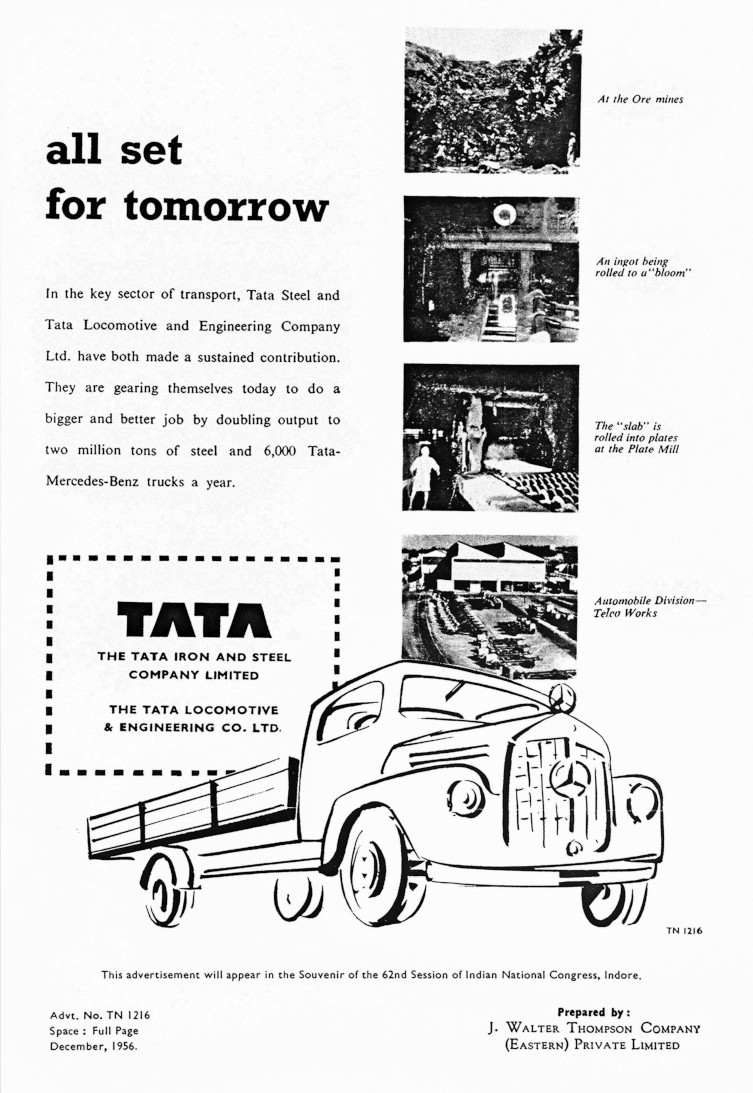
This 1956 ad (above) talks about the substantial contribution made by Tata Steel and Tata Motors to the country's transport sector. Both companies, which had doubled their production capacities, ensured that India's cities were better connected by road, and the movement of goods and services did not depend on British infrastructure alone.
When the 1965 Indo-Pak war broke out, Tata Motors had more than one lakh vehicles on the roads. Its trucks, aided by the selfless service of transport operators, carried defence personnel and equipment to the war zone.
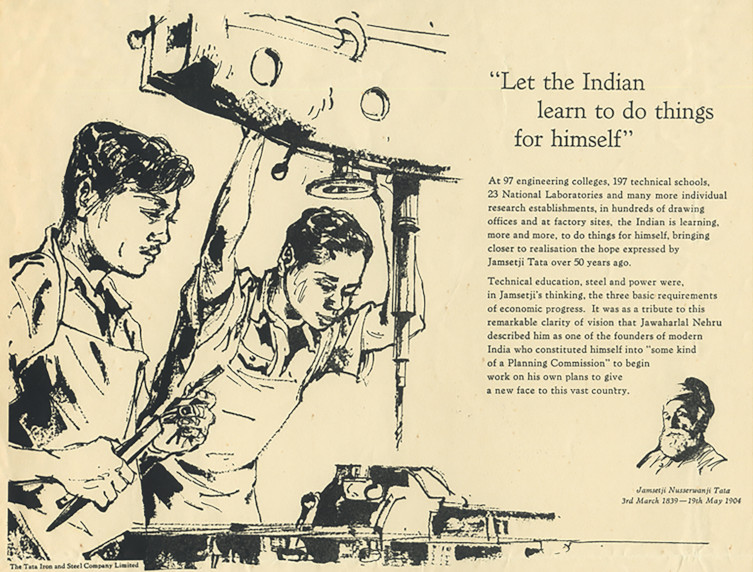
Self-reliance as an ideology was closely linked with the Swadeshi Movement and the demand for swaraj. In line with this thinking, the Tata group set up educational institutions — the Indian Institute of Science in Bengaluru in 1911; the Institute of Metallurgical Technology, at Sir Dorabji Tata's behest, in 1921; and 40 years before the Apprentices Act laid down that companies should train apprentices, craftsmen and graduate engineers, Tata Steel started its Technical Training School.
The programmes not only trained the workforce in industrial processes but also ensured that trainees attained a standard of excellence. "That is perhaps why, when the public sector steel plants were launched one after the other at Rourkela, Bhilai, Durgapur and Bokaro, a reservoir of trained manpower was already available," writes Tata group historian RM Lala in The Creation Of Wealth.
The later ads demonstrate the diverse industry segments into which the group has forayed in the last 75 years since India's independence. Leveraging technology, digitalisation and research-based innovations, Tata group companies have made a recognisable contribution in making India a newly industrialised economy. In the illustration, India's national bird, the peacock, epitomises the Tata group's range of businesses.
Photographs courtesy Tata Central Archives and Centre for Excellence; Text by Tejal Pandey


